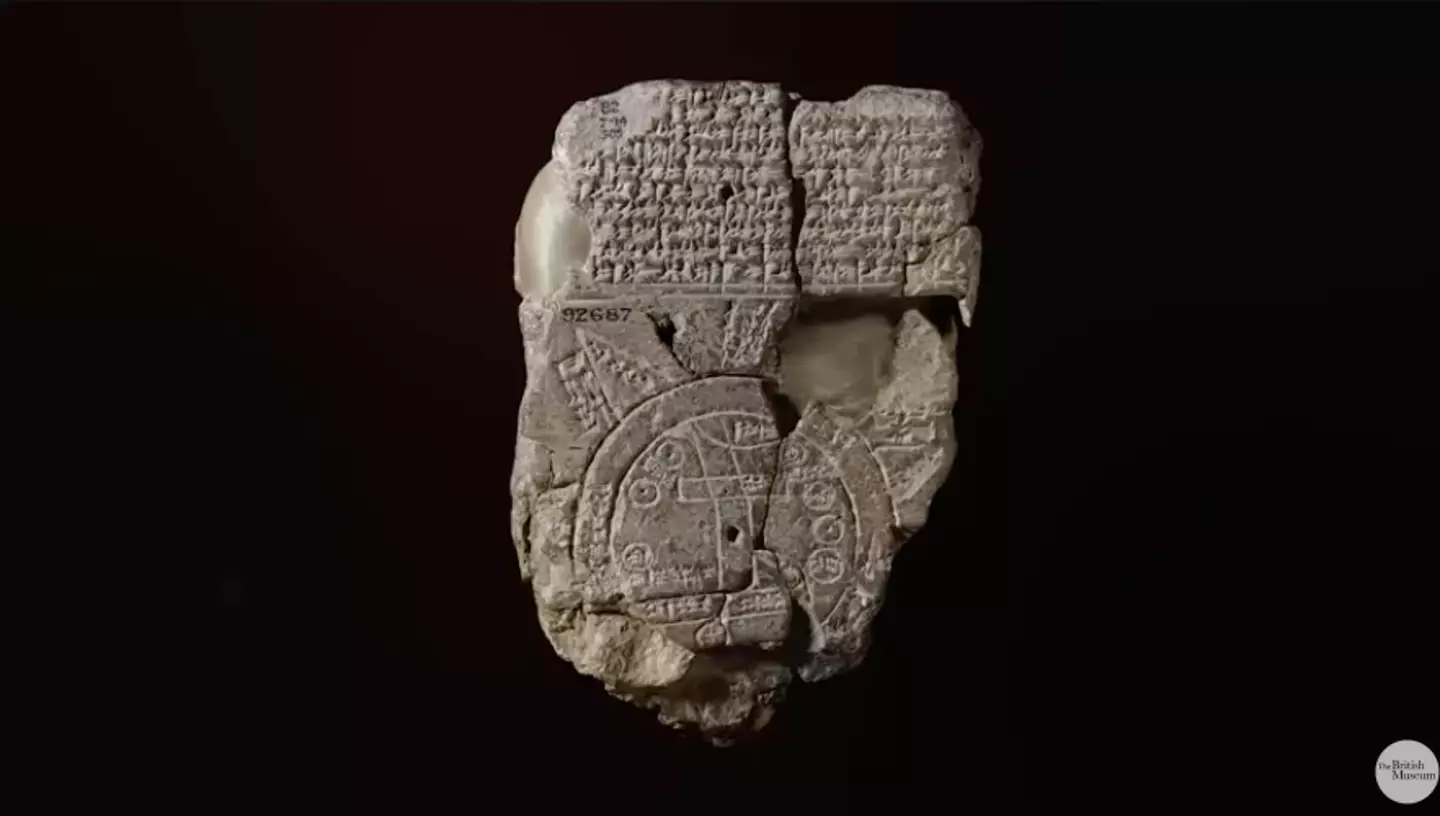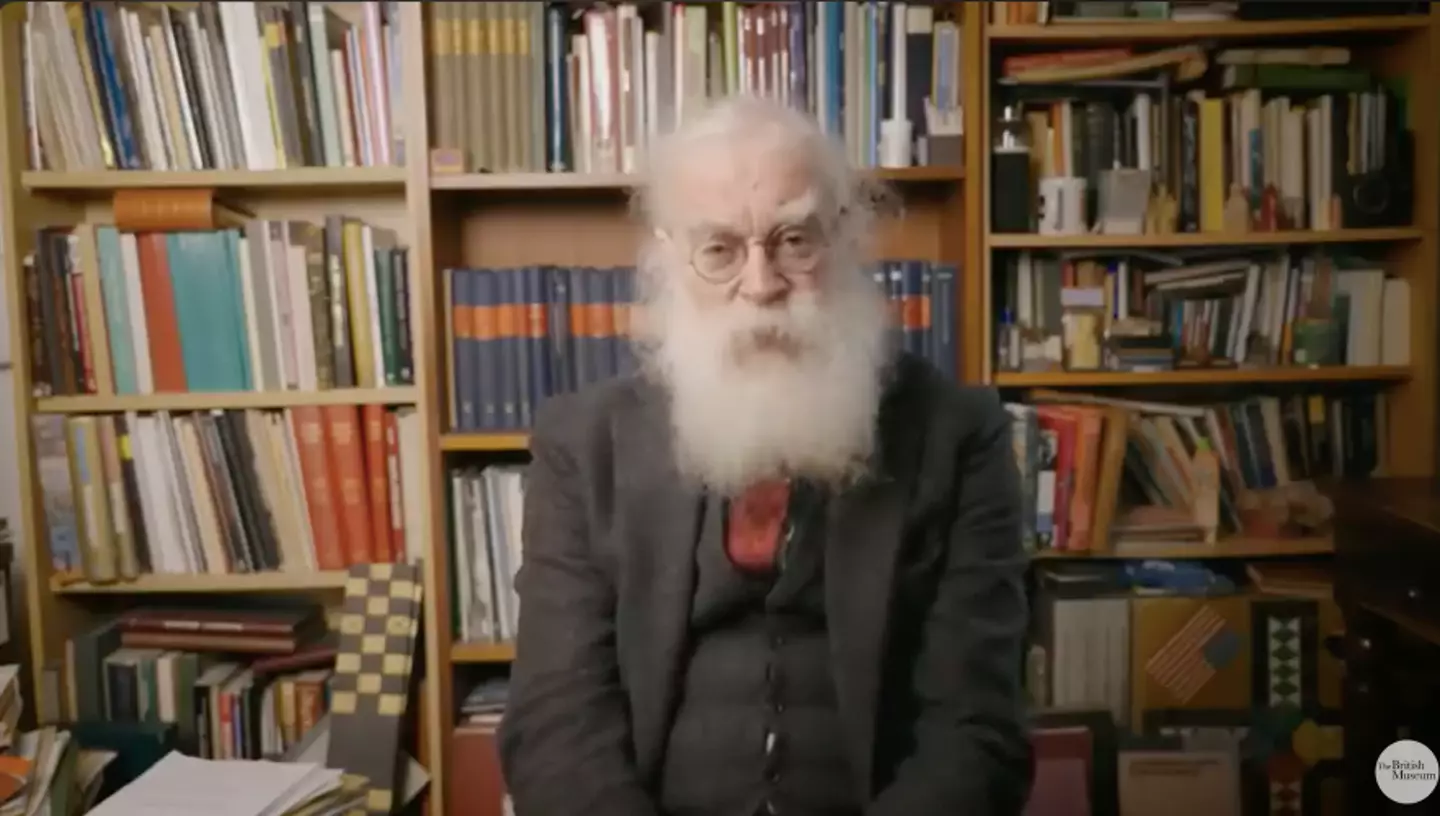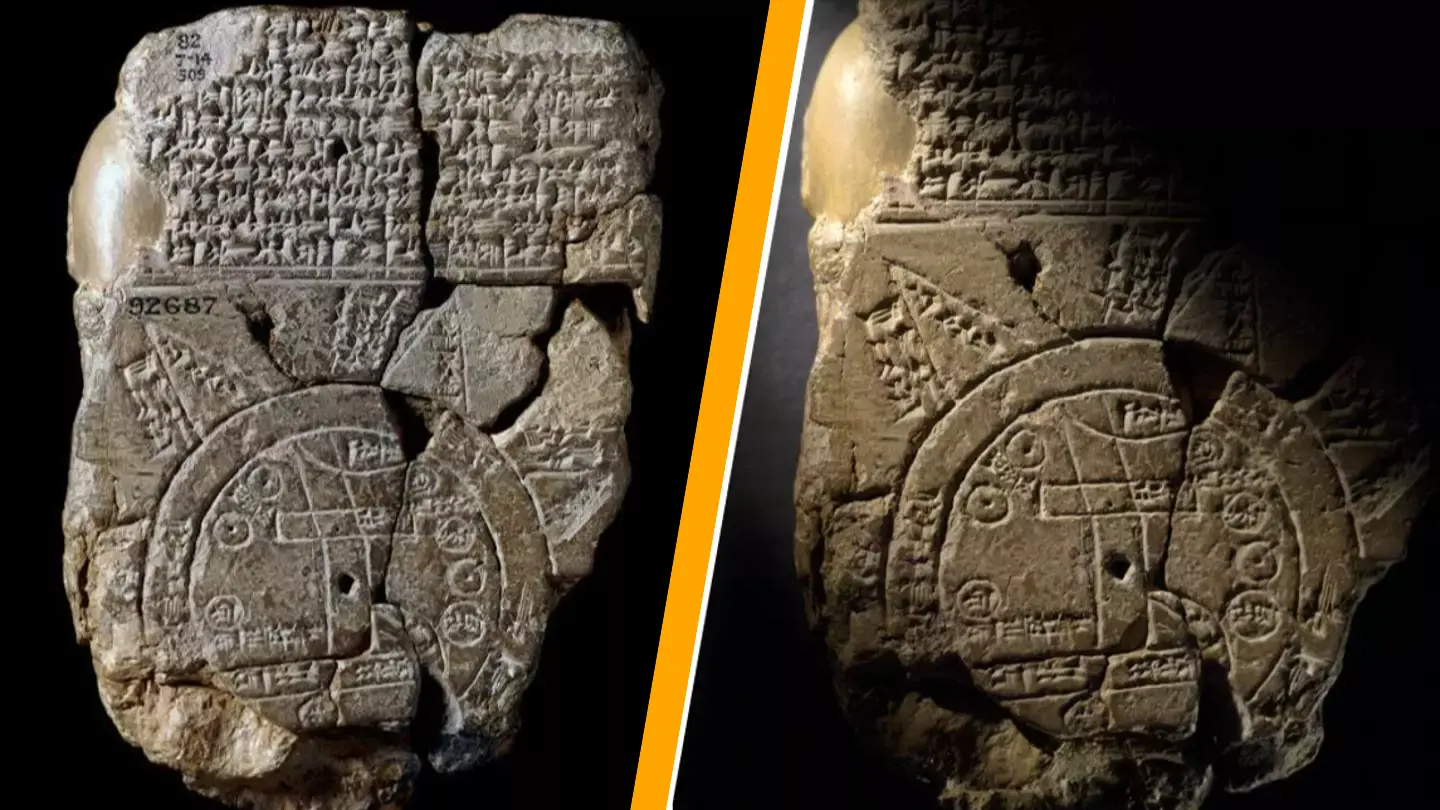The world’s oldest map has been decoded by scientists, potentially guiding the search for the remains of ‘Noah’s ark’ in the ancient region of Mesopotamia.
Currently housed in the British Museum, the Imago Mundi (Latin for ‘Image of the World’) is a Babylonian artifact depicting a map of Mesopotamia, which is now modern-day Iraq, bordered by two circles symbolizing the “bitter river.”
On the back of this tablet, directions for travelers of that era were inscribed.
Archaeologist Hormuzd Rassam discovered the map in 1882 in the ancient city of Sippar. Created about 2,900 years ago, this map was etched onto clay in Mesopotamia.
Though damaged, the artifact originally contained eight triangles around the central circle, symbolizing mountains.

Dr. Irving Finkel, an Assyriologist from the British Museum’s Department of the Middle East, along with his talented student Edith Horsley, managed to attach a fragment to the original tablet in 1995. This missing piece helped reveal a biblical reference within the map.
One key detail on the map indicates that travelers should journey through ‘seven leagues… [to] see something that is thick as a parsiktu-vessel’.
In an intriguing YouTube video, Dr. Finkel explains that ‘parsiktu’ is a significant term in his study area.
The term also appeared on another ancient Babylonian tablet, related to the dimensions of a vessel necessary for enduring the Great Flood.
“This parsiktu measurement, is something to an Assyriologist which makes their ears prick, and the fact is it’s only once otherwise known from cuneiform tablets and it’s rather an interesting cuneiform tablet too,” Dr. Finkel commented.
“Because it is the description of the Ark which was built, theoretically, by the Babylonian version of Noah.”
Following the Imago Mundi’s instructions, researchers might uncover a route to ‘Urartu’, cited in an ancient Mesopotamian poem as the landing site of a man and his family aboard an ark to save life during a flood.

The site corresponds to the Assyrian equivalent of ‘Ararat’, the Hebrew name for the mountain where Noah’s ark supposedly landed.
“It shows that the story was the same, and of course that one led to the other but also, that from the Babylonian point of view, this was a matter of fact thing,” Dr. Finkel said. “That if you did go on this journey you would see the remnants of this historic boat.”
He further stated: “For the first time, we can pronounce with authority, that if we were an ancient Babylonian, we would know where to go to see the remnants of that wonderful boat.”

